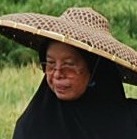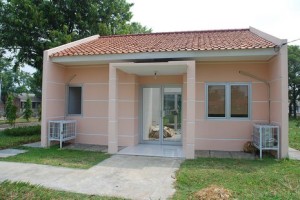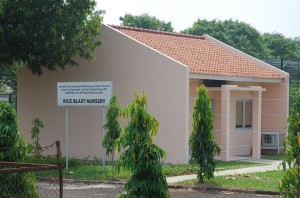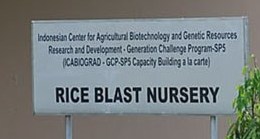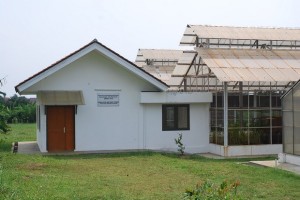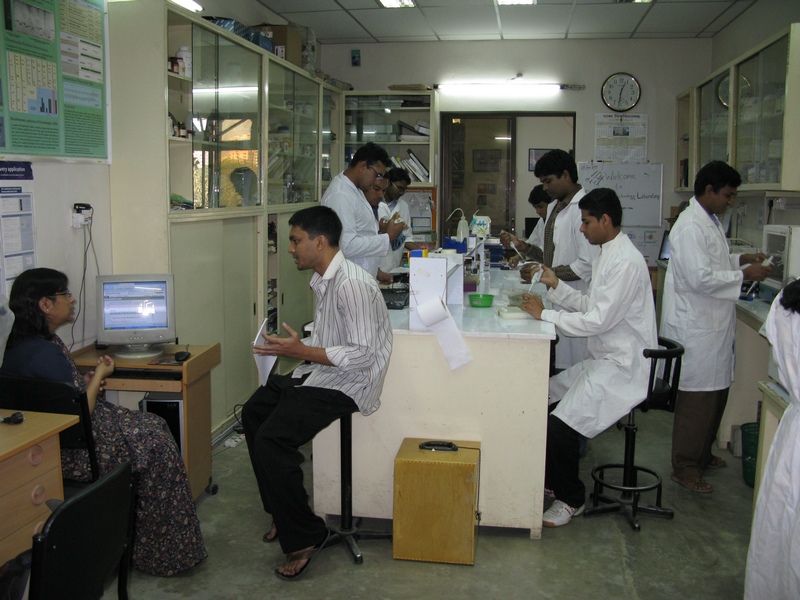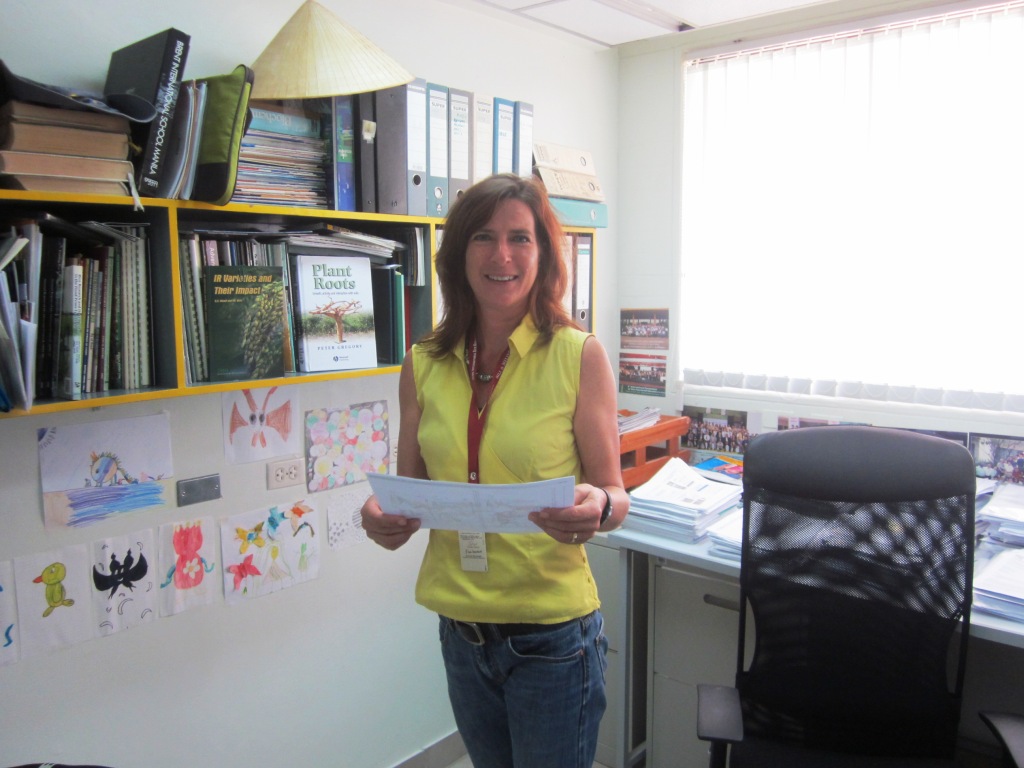Down memory lane with Masdiar Bustamam, from generation to generation
In some circles, Masdiar Bustamam (pictured right) is a mother figure of molecular breeding in Indonesia. In a marathon career spanning 37 years as a horticulturist and agricultural researcher, she helped develop and nurture the practice at the Indonesian Center for Agricultural Biotechnology and Genetic Resources Research and Development (ICABIOGRAD). Staying with the marathon metaphor, this quote from a celebrated middle- and long-distance Kenyan champion runner, Kipchoge Keino, is very apt: “This life we have is short, so let us leave a mark for people to remember.”
Back to Masdiar: having retired in early 2012, we were recently lucky enough to gain a rare insight into Masdiar’s life, and to witness the mark she has already made, by simply tagging along when she checked in on two of her ICABIOGRAD charges and mentees whose PhD studies were supported by GCP – Wening Enggarin and Joko Prasetiyono. At ICABIOGRAD, Wening and Joko have both taken the torch from Masdiar for GCP projects, as well as for other projects.
She was the best teacher for me … instilled in me a spirit to never lose hope in the research I’m doing – Joko
She was a great role model… Her persistence and positive can-do nature was exactly what I needed as a young researcher … to not just offer me assistance in my work but also in life and religion. For me, she has become a second mother – Wening
… That project really helped us out a lot and we are grateful to GCP for recognising the potential in us and supporting it – Masdiar
Here’s more of what Masdiar (and her charges) had to say as we tagged along, and chatted her up…
Tell us about your early life
I grew up and lived in West Java for most of my life. My father was a farmer and my mother a housewife. I was their first of five children.
I went to Andalas University in Padang and graduated with a Bachelor in Biology in 1974. After graduating, I worked as a staff researcher at a local horticulture research institute focusing on pests and diseases, particularly fungi in tomato soils. I was lucky early in my career to have opportunities to visit research institutes in The Netherlands, Japan and USA, all of which enhanced my skills. While in USA, I completed my Masters in rice blast disease – a fungus-related disease, which severely hampers rice yields in Indonesia, and all around the world.
After my time in USA, I accepted a position at the International Rice Research Institute (IRRI) in The Philippines. This was the start of the second phase of my career, in which I began to focus on molecular biology. When I returned from The Philippines, I realised that we needed to improve our capacity to use molecular markers for breeding, which led me to take a job at ICABIOGRAD.
Setting up a lab – GCP lends a hand
When I first started at ICABIOGRAD we had empty benches. It took a lot of time and money to fill them with the equipment we have today. Rebecca Nelson from Cornell University in USA provided us with a lot of support in getting us started. We were involved in one of her GCP projects for two years working on blast resistance in rice.
We were also working on another GCP project led by Abdelbagi Ismail studying phosphorus-deficiency tolerance in rice too, dubbed the Pup1 project. Joko was actually my PhD student for that project and did a lot of the work.
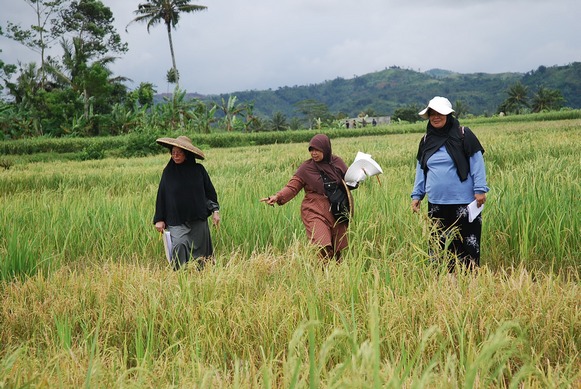
Selecting Pup1 lines in farmers’ fields in Sukabumi, West Java, in 2010. L–R: Masdiar Bustamam, Tintin Suhartini and Ida Hanarida Sumantri.
Both Rebecca and Adbdelbagi helped me draft a proposal to GCP in 2007 for a project to enhance our capacity in phenotyping and molecular analysis to develop elite rice lines suitable for Indonesia’s upland regions. We had the understanding to do the science, but needed to enhance our facilities to carry it out.
That project really helped us out a lot and we are grateful to GCP for recognising the potential in us and supporting it.”
GCP recognised the need for such a project as many of Indonesia’s brightest researchers were leaving the country because of the lack of suitable facilities, and so funded the two-year ICABIOGRAD-defined capacity-building project. The grant covered – among other areas – intensive residential staff training at IRRI; PhD student support, which allowed Wening to complete her PhD; infrastructure such as a moist room, temperature-controlled centrifuge apparatus, computers and appropriate specialised software; and blast and inoculation rooms.
Writer’s note: The tailor-made grantee-driven capacity-building project above was a cornerstone of GCP Phase I’s capacity-building strategy, and was dubbed ‘Capacity building à la carte’. With this historical note, we take an interlude here, to tour the facilities Masdiar has mentioned above.
Our first stop is the Rice Blast Nursery…
Next, we visit the Inoculation and Moist Rooms…
After our tour of the facilities, Masdiar resumes her story: “That project really helped us out a lot and we are grateful to GCP for recognising the potential in us and supporting it so that researchers like Wening bloom and blossom, now and into the future,” says Masdiar glowingly of one of her mentees and successors.
I’m proud of how they have matured and I’m really looking forward to when they and their teams produce new rice varieties, from the facilities I helped establish, that will help the farmers…I sacrificed what I enjoyed doing for a challenge whose benefits I recognised for my country.”
Mission-driven researcher, nurturer and mentor, all rolled into one
For Masdiar, it wasn’t work, but rather a passion and a hobby. “Throughout my career, I always enjoyed research, especially in plant pathogens,” she remembers. “Working with biotechnology was difficult because I didn’t have a background in the area. I sacrificed what I enjoyed doing for a challenge whose benefits I recognised for my country.”

From generation to generation: Masdiar (2L) drops in on her charges and torch-bearers at ICABIOGRAD’s Molecular Biotechnology Lab. L–R: Wening Enggarini, Masdiar Bustamam, Tasliah Zulkarnaeni, Ahmad Dadang and Reflinur Basyirin.
In the later half of her career, Masdiar recollects how she enjoyed training and mentoring younger researchers like Joko and Wening. “I’m proud of how they have matured and I’m really looking forward to when they and their teams produce new rice varieties, from the facilities I helped establish, that will help the farmers.”
Both Joko and Wening attest that Masdiar’s support and supervision were vital for their professional development and consequent career advancement. “She was the best teacher for me. She taught me how to manage a project, how to forge international collaborations, and how to write a good publication,” remembers Joko. “She also instilled in me a spirit to never lose hope in the research I’m doing.”
“She was a great role model for me!” exclaims Wening proudly. “Her persistence and positive can-do nature was exactly what I needed as a young researcher who was just starting a career. Even more so was her ability to take time out of her busy day to not just offer me assistance in my work but also in life and religion. For me, she has become a second mother in this life. I’m blessed to be so lucky!”
Clearly, Masdiar has made her mark, leaving a cross-generational living legacy in molecular breeding embodied in these young researchers.
Links
- Masdiar’s project report, with a picture of the blast nursery under construction (p 156 in this PDF)
- Photo-story on Facebook
- Rebecca Nelson’s project, Targeted discovery of superior disease QTL alleles in the maize and rice genomes (p 16 in this PDF)
- GCP’s capacity building








